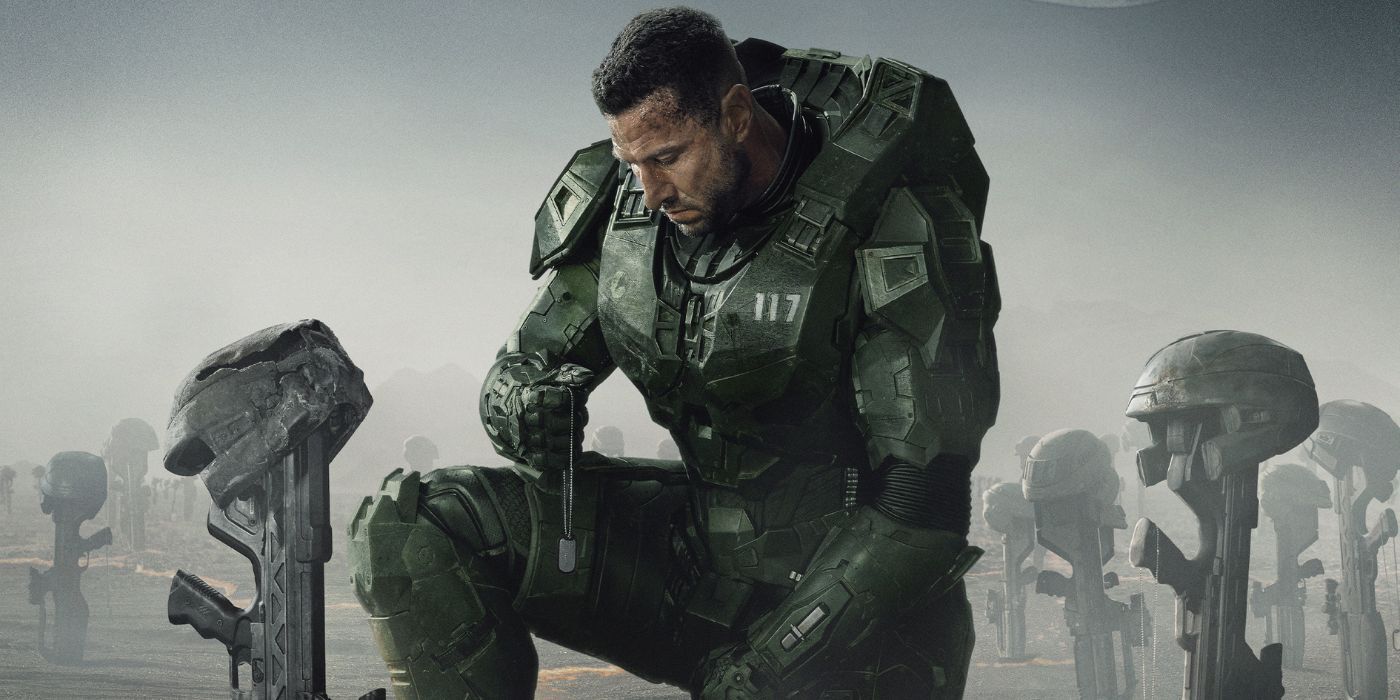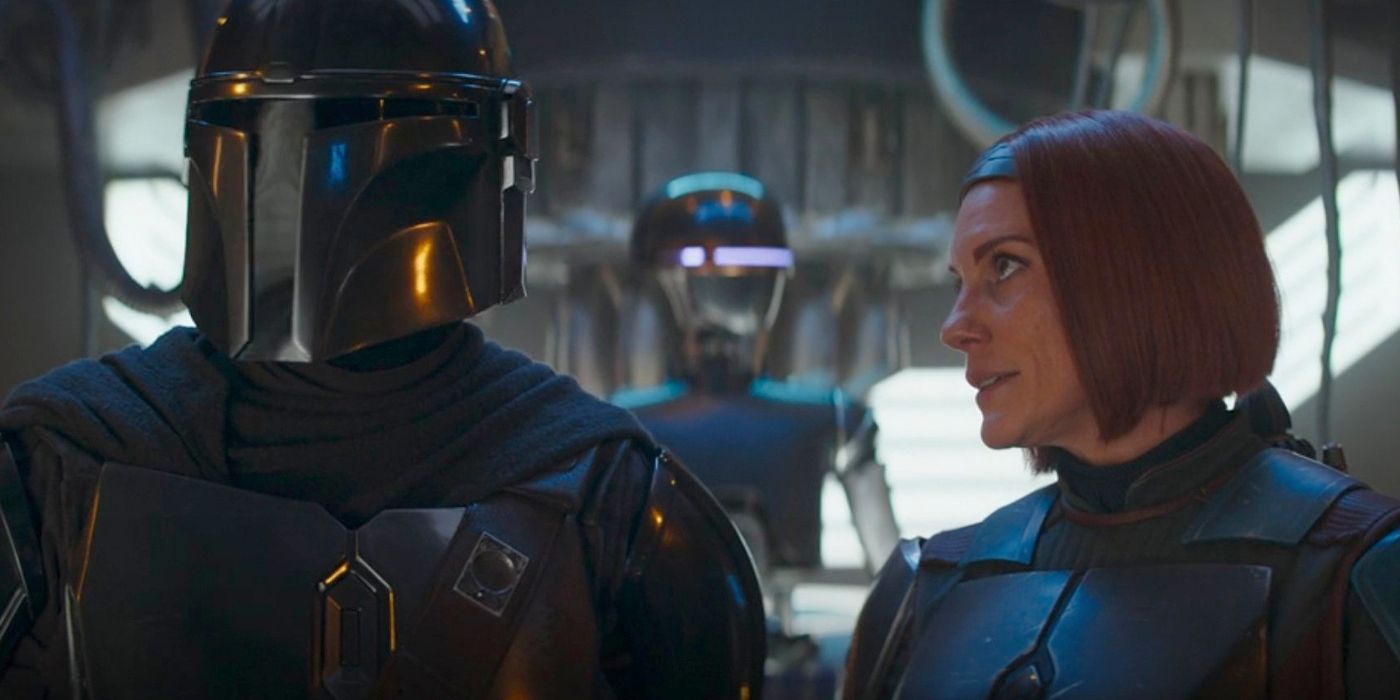The Big Picture
- Fans were disappointed with the decision to have Master Chief remove his helmet in the Halo TV series.
- Actor Pablo Schreiber defended the decision, claiming it was necessary for long-form storytelling in television.
- However, the original Halo games prove that a character’s face isn’t essential for connecting with them on-screen.
Spartan super soldier Master Chief still has a fight to finish in Halo Season 2, but the iconic character’s actor in the series, Pablo Schreiber, is engulfed in another battle after some recent comments about the space marine he portrays. While Season 1 of Halo shattered records for Paramount+ as one of its most-watched original shows, it’s no secret that hardcore fans of the beloved video game series weren’t satisfied with the adaptation and the numerous changes it made to the source material. One of the most controversial changes that the series made was undoubtedly the decision to have John-117, AKA Master Chief, remove his iconic helmet. This is something that has never happened in any of the games that the character has appeared in, and thus, it certainly was a big leap for viewers to accept.
With Season 2 just around the corner, Pablo Schreiber finally addressed why he thinks Master Chief removes his helmet for the live-action series. Instead of clearing up the reasoning for why this creative decision was made, Schreiber’s response honestly makes things even more confusing.
Halo
Aliens threaten human existence in an epic 26th-century showdown.
- Release Date
- March 24, 2022
- Creator
- Steven Kane, Kyle Killen
- Main Genre
- Sci-Fi
- Seasons
- 2
Why Does the ‘Halo’ Show Make Master Chief Take Off His Helmet?
Changes for adaptations aren’t just often necessary. They should also be encouraged. If you’re not going to do anything different or original with an IP, then why even adapt it to begin with? That being said, there’s changing something for the sake of adaptation clarity and then there’s altering a plot so much to the point where it is unrecognizable from the original story that’s being adapted. Case in point: Season 1 showrunner Steven Kane flat-out admitted that they didn’t even play the games that the show is based on.
This is a sentiment that seems to continue with Schreiber’s recent explanation of why his Master Chief doesn’t take off his helmet:
“You’re not going to be able to bring an audience along in a long-form story without having access to a character’s face, which tells you what they’re feeling, how they think about everything. That access to a character’s emotional life, over the course of time, is what makes you empathize and connect with a character. I’m sorry, but it’s the only choice for long-form storytelling in television. What I would say to anybody who disagrees with that, I totally respect that opinion. But it’s a pretty basic place to start when you’re talking about making a television show of quality.”
Does showing a character’s facial emotions make it easier to relate to them? Sure. Is seeing someone’s face essential to making a gripping character? Absolutely not, and the original games already prove that.
Why Is Master Chief So Popular in the ‘Halo’ Games?
The Halo series has been around since 2001, beginning with the classic Xbox original, Halo: Combat Evolved. Since then, there have been six main games, four spin-off games, and a truckload of books that expand this epic sci-fi universe. To briefly summarize the overall concept of the games, Halo takes place hundreds of years into the future when humanity has started to colonize worlds beyond Earth. While the United Nations Space Command (UNSC) has to contend with the occasional rebel colony, that’s nothing compared to the extraterrestrial threat that humanity would eventually face. Eventually, the humans become the targets of The Covenant — a radical collection of aliens obsessed with religious conquest.
To help combat the threat of the UNSC, the organization spearheads the ethically controversial Spartan Program, where the goal is to create genetically superior and technologically advanced super soldiers. Easily the most famous of these soldiers is John-117, codenamed Master Chief (Steve Downes), who is already a decorated war hero by the time The Covenant invades. One mission sees Chief and his AI companion Cortana (Jen Taylor) discover a Halo ring — a massive structure capable of destroying all life in the galaxy should it fall into the wrong hands.
Many fondly remember the Halo games for their revolutionary gameplay and influential multiplayer. That said, the Halo series has persevered for its unique sci-fi setting, and especially, the iconic figure that is Master Chief. John-117 as a character doesn’t just work because he has one of the coolest suits of armor in video game history. He works because he was created as a soldier to do the bidding of his country without question, but he is also continuously challenged and motivated by his humanity and conscience, usually through the help of his dedicated companion, Cortana. Through smart writing, simple yet effective mannerisms, and an incredible voice-over performance from Steve Downes, Master Chief has easily become one of the best characters in video gaming history. He also achieved all of this without removing his iconic helmet once.
Voice Acting Makes Pablo Schreiber’s Point Null and Void
It’s somewhat comical that Schreiber thinks seeing an actor’s face is required for a compelling character when viewers of the show commonly refer to Halo as a rip-off of The Mandalorian. Granted, yes, Din Djarin (Pedro Pascal) does take off his helmet from time to time, but only when the plot requires him to. Master Chief taking off his helmet feels like it was done purely to shock fans of the game.
Voice acting as an art form generally disproves Schreiber’s claim. While many animated/voice-over characters aren’t always covering their mouths or faces, they’re still being portrayed by talented individuals capable of conveying emotion without us, as audience members, seeing them. There are only a billion examples to choose from, but perhaps the most appropriate one is Downes’ performance in the original games. Through the power of voice-acting, players have gotten to witness the stoic Master Chief having light banter with Cortana, forming an unlikely friendship with his old enemy, The Arbiter (Keith David), and saying goodbye to a lifelong friend with Captain Johnson (David Scully).
It’s abundantly clear that voice acting as an art form still has phenomenal staying power. Even with the frightening rise of AI, not even a machine can replicate the true talent of performers who make these movies, shows, and games possible. At the very least, at least Pablo Schrieber made one very good point recently — the Master Chief sex scene was also an incredibly bad idea.
Halo Season 2 premieres on Paramount+ on Thursday, February 8.
Watch on Paramount+
Source link


